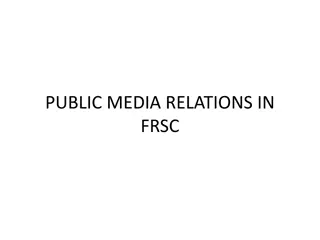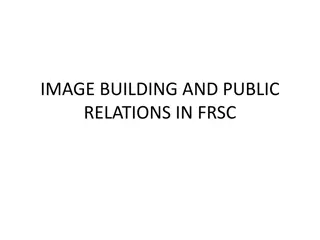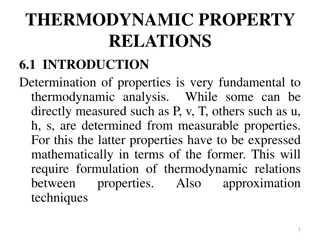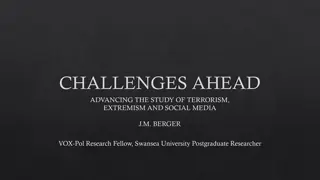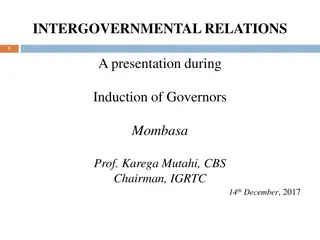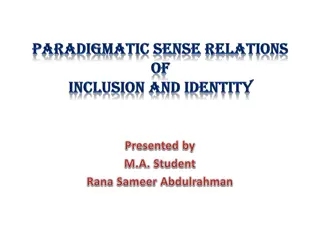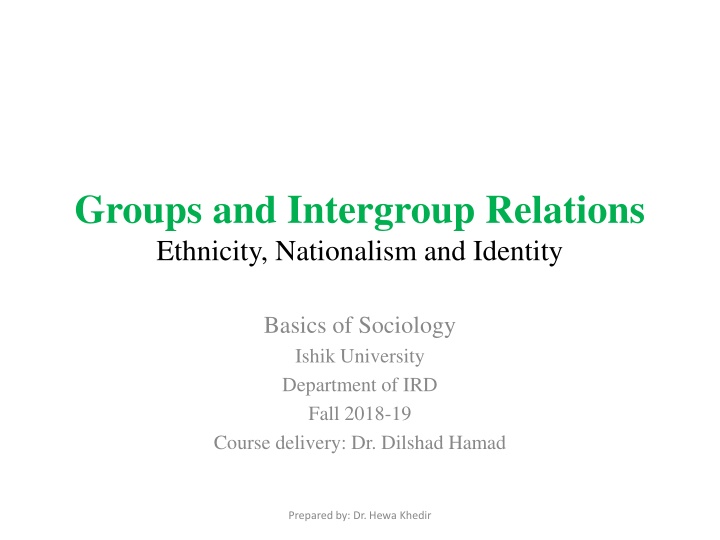
Ethnicity, Nationalism, and Identity in Sociology
Explore the concepts of race, ethnicity, and nation in society. Delve into intergroup relations, the social construct of race, and the importance of shared culture in ethnic identity. Learn about nations as historic entities with distinct national identities and territories.
Download Presentation

Please find below an Image/Link to download the presentation.
The content on the website is provided AS IS for your information and personal use only. It may not be sold, licensed, or shared on other websites without obtaining consent from the author. If you encounter any issues during the download, it is possible that the publisher has removed the file from their server.
You are allowed to download the files provided on this website for personal or commercial use, subject to the condition that they are used lawfully. All files are the property of their respective owners.
The content on the website is provided AS IS for your information and personal use only. It may not be sold, licensed, or shared on other websites without obtaining consent from the author.
E N D
Presentation Transcript
Groups and Intergroup Relations Ethnicity, Nationalism and Identity Basics of Sociology Ishik University Department of IRD Fall 2018-19 Course delivery: Dr. Dilshad Hamad Prepared by: Dr. Hewa Khedir
Learning Objectives Introduce students to the most important grouping in society (race, ethnicity and nation). Explore domination-subordination relations between groups and the cognitive dynamics that involved in this process. examine various form of intergroup relations (tolerance to intolerance). Prepared by: Dr. Hewa Khedir
Race Race: superficial physical differences that a particular considers significant. refers to society Prepared by: Dr. Hewa Khedir
Race: from a biological definition to the social construct of race In the past, theorists have posited categories of race based on various geographic regions, ethnicities, skin colors, and more. Their labels for racial groups have connoted regions (Mongolia and the Caucus Mountains, for instance) or skin tones (black, white, yellow, and red, for example). Prepared by: Dr. Hewa Khedir
Social Construct of Race Race is not a biological fact. In other words, there is no biological basis for differences between racial groups. What we come to think of as race, or physical difference, is called phenotype. Your phenotype refers to your physical characteristics like eye color and skin color. Phenotype means the observable physical differences in people. The problem is we've taken phenotype and used it to justify domination and exclusion based on physical difference. Sociologists believe that race is the product of our social world. Prepared by: Dr. Hewa Khedir
Ethnicity Ethnicity: describes shared culture. This culture might include shared religion, traditions, other commonalities. language, and among Prepared by: Dr. Hewa Khedir
Nation and Nationalism Nations as historic entity They have clear, national identity Based on language, custom and historic memory They have a clear national territory Self-awareness of an already existing nation Right to self-determination (independent state) Obstacles that prevent a nation from realizing the nation s rights Prepared by: Dr. Hewa Khedir
Minority Group Minority group: describe groups that subordinate, or that lack power in regardless of skin color or country of origin. are society Prepared by: Dr. Hewa Khedir
Minority Group Sociologist Louis Wirth (1945) defined a minority group as any group of people who, because of their characteristics, are singled out from the others in the society in which they live for differential and unequal treatment, and who therefore regard themselves as objects of collective discrimination. physical or cultural Prepared by: Dr. Hewa Khedir
Subordinate and Dominant Group The term minority connotes discrimination, and in its sociological use, the term subordinate group can be used interchangeably with the term minority, while the term dominant group is often substituted for the group that s in the majority. These definitions correlate to the concept that the dominant group is that which holds the most power in a given society, while subordinate groups are those who lack power compared to the dominant group. Prepared by: Dr. Hewa Khedir
Characteristics of Minority Groups According to Charles Wagley and Marvin Harris (1958), a minority group is distinguished by five characteristics: 1- unequal treatment and less power over their lives, 2- distinguishing physical or cultural traits like skin color or language, 3- involuntary membership in the group, 4- awareness of subordination, and 5- high rate of in-group marriage. Prepared by: Dr. Hewa Khedir
Stereotype, prejudice and discrimination Stereotypes are oversimplified generalizations about groups of people. Stereotypes can be based on race, ethnicity, age, gender, sexual orientation almost any characteristic. They may be positive (usually about one s own group, such as when women suggest they are less likely to complain about physical pain) but are often negative (usually toward other groups, such as when members of a dominant racial group suggest that a subordinate racial group is stupid or lazy). In either case, the stereotype is a generalization that doesn t take individual differences into account. Prepared by: Dr. Hewa Khedir
Prejudice and Racism Prejudice refers to the beliefs, thoughts, feelings, and attitudes someone holds about a group. A prejudice is not based on experience; instead, it is a prejudgment, originating outside actual experience. Racism is a stronger type of prejudice used to justify the belief that one racial category is somehow superior or inferior to others; it is also a set of practices used by a racial majority to disadvantage a racial minority. Discrimination consists of actions against a group of people. Prepared by: Dr. Hewa Khedir
Intergroup Relations Intergroup different groups of people) range along a spectrum between tolerance and intolerance. The most tolerant form of intergroup relations is pluralism, in which no distinction is made between minority and majority groups, but instead there s equal standing. At the other end of the continuum are amalgamation, expulsion, and even genocide stark examples of intolerant intergroup relations. relations (relationships between Prepared by: Dr. Hewa Khedir
Genocide The deliberate annihilation of a targeted subordinate) group, is the most toxic relationship. Historically, we can see that genocide has included both the intent to exterminate a group and the function of exterminating of a group, intentional or not. (usually intergroup Prepared by: Dr. Hewa Khedir
Expulsion a forced, by a dominant group, to leave a certain area or country. subordinate group being Prepared by: Dr. Hewa Khedir
Segregation Segregation refers to the physical separation of two groups, particularly residence, but workplace functions. It is important to distinguish between de jure segregation (segregation that is enforced by law) and de facto (segregation without laws but because of other factors). in in also and social segregation that occurs Prepared by: Dr. Hewa Khedir
Pluralism Pluralism is represented by the ideal of the United States as a saladbowl : a great mixture of different cultures where each culture retains its own identity and yet adds to the flavor of the whole. True characterized by mutual respect on the part of all cultures, both dominant and creating a environment of acceptance. pluralism is subordinate, multicultural Prepared by: Dr. Hewa Khedir
Assimilation Assimilation process by which a minority individual or group gives up its own identity by taking on the characteristics of the dominant culture. In the United States, which has welcoming and immigrants from different lands, assimilation has been a function of immigration. describes the a history absorbing of Prepared by: Dr. Hewa Khedir
Amalgamation Amalgamation process by which a minority group and a majority group combine to form a new group. Amalgamation achieved intermarriage between races. is the is through Prepared by: Dr. Hewa Khedir





